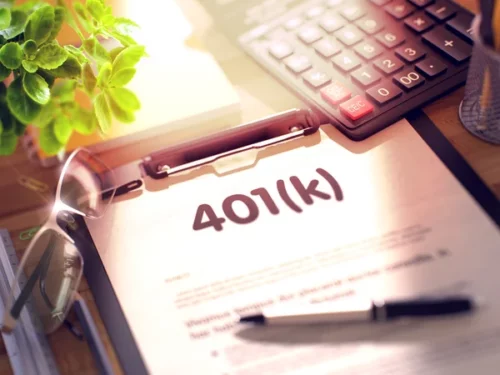A 401(k) account is the centerpiece of the retirement portfolio for most Americans. But a fall in the value of its holdings can leave your entire nest egg in tatters.
So, how to protect 401k from stock market crash? It’s important to learn about it in order to stay safe.
Here we look at some ways below.
Can You Lose Your 401K If the Market Crashes?
Yes, 401(k) investments are mostly in equity-based plans.
So when the markets perform poorly, their value declines as well.

This is why it is essential to always diversify the retirement portfolio using different asset classes.
Depending solely on an IRA or 401(k) is risky.
How to Protect 401K from Stock Market Crash
While market downturns are inevitable, here are some ideas to help keep your savings safe.
Diversification
Diversifying is the number one strategy to protect your 401(k) or any other investment.
Several asset classes are uncorrelated or even move inversely compared to securities.
Instead of investing only in equities, consider keeping some part in real estate or fixed-income instruments.
Stay Invested
As we show in the next section, withdrawing money from a 401(k) during a market downturn is counterproductive.
Long-term returns on the S&P 500 are above 10%.
Most diversified equity portfolios can offer similar results.
However, many folks fail to understand that this is just an average figure.
There will be good and bad years in between.

Retaining confidence and waiting out a slowdown while continuing to invest is important.
The compounding benefit of small monthly payments offers significant advantages.
Furthermore, withdrawing during a crash and then reinvesting in an upturn is easier said than done.
Even seasoned traders find it hard to “time the market” perfectly. Trying to implement it can lead to even more losses.
Plan Ahead
Retirement savings are not meant for day-to-day use.
However, if there is a pressing need for money, you might sometimes think of tapping them.
If it is absolutely necessary, try to plan things in advance.
For example, if the markets are high today, you could withdraw the cash now.
Don’t wait till the need arises to take out the money.
If the market crashes at that time, the amount available may suddenly be much lower than what you expected.
Moreover, the earlier you can put the money back, the better it will be for long-term compounding benefits.
Monitor Your Portfolio
Even when markets are not doing that well, there are always a few bright spots.
It can be fruitful to rebalance your portfolio. Weed out the big losers and reinvest in better performers.
As we explain later, the losses made in this process can help save some tax for you.
Buy More
It might sound contrarian, but a down market is a perfect place to get good stocks at a discount.
If a bit of extra cash is available, consider putting more money in your IRA or 401(k) during a crash.
Keep Calm
Most importantly, do not act rashly.
If you see a huge downside, remember that markets don’t always remain bad.
Just because everyone else is selling off does not mean that holding on to your investments is a bad strategy.
Consult an expert to assess your portfolio and follow their advice.
Should I Stop Putting Money in My 401K During Recession?
No, it is not advisable to pause contributions to a 401(k) account during stock market crashes.
The reason is that compounding benefits are significantly lost when you stop putting money in the account.
A study conducted by Morningstar investigated the returns of a hypothetical investor who placed just $500 monthly in their 401(k).

Their research compared three major market crashes in the last two decades:
- Dot com bust
- 2008 crash
- The Covid-19 pandemic
It found that when compared to those who stopped contributions, the ones who persisted always came out on top.
The monthly $500 kept adding up, and when the market revived, so did the returns on that money.
On the other hand, the cash withdrawn did not grow over the long term.
Is It Better to Withdraw from 401K or Sell Stock?
It is usually a better idea to sell stocks from taxable accounts rather than 401(k) withdrawals.
There are several reasons for this.
Firstly, taxable accounts might have a more conservative portfolio than 401(k)’s.
The latter is designed to maximize retirement savings and, therefore, might contain riskier investments.
Hence, the former has a higher probability of having dropped lesser.
Again, it is possible to deduct stock-related losses up to $3,000 from taxable income.
It helps to reduce the overall loss somewhat.
If the decline in value of the shares being sold is above this amount, it can even be carried over to later years.
This way, folks can get continued tax deductions.
Finally, if a 401(k) withdrawal is unavoidable, choose to sell off the more conservative funds first.
When the market comes back up, you won’t lose out on the potential upside of the more aggressive stocks with this strategy.
Notably, you don’t have to pay income taxes on Roth 401(k) and Roth IRA withdrawals.
Hence, it is a better option than taking out money from the traditional ones.
Here are a few more ideas that might help reduce the need for depleting retirement savings:
- Use all money available in your cash accounts for everyday needs.
- Scale down your lifestyle and avoid unnecessary spending.
- Sell any fixed-income assets since they will see a lower downside during a stock market crash.
- Dispose of ETFs or balanced fund holdings first, for the same reason as above.
Should I Move My 401K to Safer Investments?
Moving away from an equity investment strategy toward fixed income, target date funds, or other safer options can have many implications.
It would be best to consider the following things before making this decision.

- Investment horizon (time left to retire)
- Percentage allocation to 401(k) and other investments
- Risk aversion
- How long is the stock market downturn expected to last?
Additionally, when choosing, it might be wise to consider which type of safer alternatives are best.
Below we discuss some of these considerations.
Age
Younger investors may find it easier to stay the course in equity-based portfolios.
With age, the risk tolerance to face the ups and downs of the stock market falls considerably.
Moreover, in the early stages of our careers, a 401(k) is nothing but another deduction on the paycheck.
For those nearing retirement, the same money suddenly becomes more “real.”
Their future plans start to factor in the sum that has accumulated in this account.
Hence, for those in their 50s and 60s, making a gradual shift towards safer choices is natural.
But for those younger, as we have shown earlier, withdrawing cash from a 401(k) might be counterproductive.
As per historical data, most bear markets usually do not last beyond 18-20 months.
Staying invested might be much better from a long-term wealth-building perspective.
Diversification
As discussed earlier, diversification is an important tool to lower risk in a portfolio.
For example, if your IRA or 401(k) already includes bonds, moving money elsewhere might be unnecessary.
If not, there may be a scope to add a few of them to the mix.
Asset Allocation Thumb Rules
Several guidelines of financial planning help to identify the right degree of asset allocation in stocks vs. bonds.
A common one is the “Rule of 100.”
It suggests subtracting your age from this number to arrive at the percentage of your portfolio to be earmarked for equities.
A 30-year-old person should have 70% of their wealth in stocks.
One who has reached 50 is better served with just half their assets in securities.
Applying such principles can help decide how much money should stay in the 401(k).
Types of Bonds
Not all “safe” assets are made equal.
For example, short-term fixed-income instruments offer better returns than longer ones.
Similarly, US Treasury bonds usually outperform TIPS, but the latter have inflation protection.
When withdrawing from your retirement savings, it is important to choose wisely where the cash should be reinvested.
Bond Funds
Adding bond funds, both ETFs and mutual funds, might be a better option than selecting bonds directly.
These instruments provide dual diversification.
For one thing, the bond asset class itself is more stable than equities.
Adding a basket of bonds instead of a single one helps to make it even less volatile.
But the biggest advantage they offer is liquidity.
Traditional fixed-income assets are difficult to sell when the markets weaken.
But these instruments trade just like stocks.
They are much easier to buy and sell when needed.
Final Thoughts
Depending only on your 401(k) for retirement savings is a risky strategy.
These accounts are largely equity-based and, therefore, prone to market crashes.
Having a diversified portfolio of stocks, bonds, real estate, and other assets is a better strategy.
There are many thumb rules that can help to decide how much of your money should go into each of these.
However, once invested, it is best to avoid withdrawing cash from your equity assets to put it into fixed-income ones.
This is true even if the market crashes and the value of your savings fall down considerably.
Research has shown that staying invested in stocks usually offers better returns in the long run.


 Tags:
Tags:










